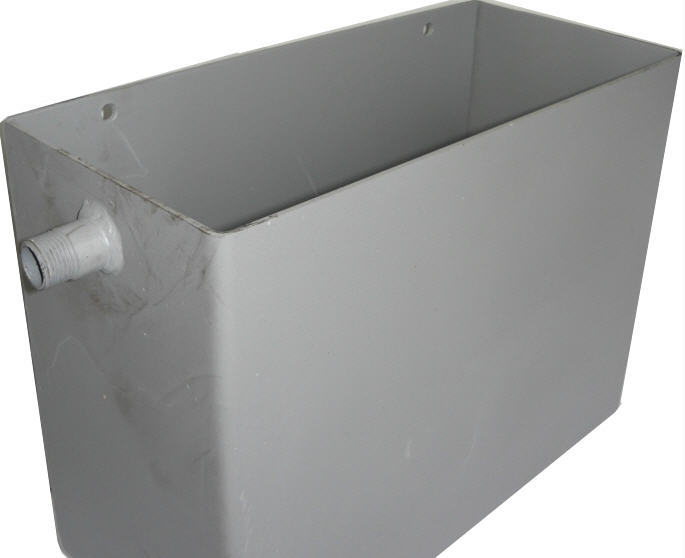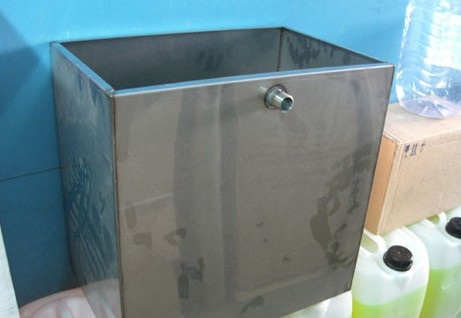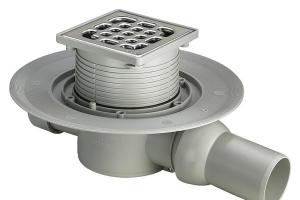How to calculate and install an expansion tank in an open heating system
The open-type expansion tank, which is part of the heating system, is a leaky container made of sheet steel. The main difference between these constituent elements of the heating structure is the presence of holes in the form of inspection hatches through which the user can control the level of coolant in the system. In addition, this feature allows the simplest way to replenish the liquid of the heating system in case of leakage or evaporation from the tank. These parts can be produced both in a cylindrical form, and have a construction in the form of a cube or a rectangular parallelepiped. Open-type tanks can be made with your own hands, having welding equipment available and having experience in similar work. A tank of this type does not provide for the presence of rubber chambers, valves, etc.
The main purpose of an expansion tank of this type is to accommodate excess coolant during operation of the heating system. As you know, the volume of liquid increases when heated, and such a tank compensates for the pressure level in the pipes of the heating main.
 Calculation of capacity and determination of the optimal type of tank should take into account the average increase in the volume of the coolant during heating. The volume of the installed tank directly depends on the volume and type of coolant in the heating system. So, at a water temperature of 80 ° C, its total volume will increase by an average of 2.5%.
Calculation of capacity and determination of the optimal type of tank should take into account the average increase in the volume of the coolant during heating. The volume of the installed tank directly depends on the volume and type of coolant in the heating system. So, at a water temperature of 80 ° C, its total volume will increase by an average of 2.5%.
The calculation of the optimal capacity volume should also take into account the safety factor, which corresponds to 1.2 in all methodological calculations.
To determine the required volume of the expansion tank, the formula is used:
V tank \u003d (V 1 + V 2) x 1.2, where:
- V 1 - the volume of the coolant at operating temperature (in the heated state);
- V 2 - the volume of the coolant to provide a water seal (if the volume of the coolant after expansion is less than 15 liters, V2 will be V1 * 0.2. In the case when the volume of the coolant during expansion is more than 15 liters, V2 will be V1 * 0.05, but not less than 3 liters);
- 1.2 - safety factor.
The above calculation determines the minimum allowable volume of the expansion tank.
DIY design and installation
H2_2Tanks are selected at the design stage of the heating system, and this stage should be approached with the utmost attention, since the correct calculation directly affects the normal operation of the entire heating system.
When designing and calculating during installation with your own hands, it should be noted that the normal operation of an open heating system does not provide for the presence of a circulation pump. The circulation of the coolant in this case occurs due to the laws of physics. Calculation of parameters and technical characteristics, marking and connection can be done both with your own hands and with the involvement of specialists.
The project of the described system can provide for both the presence of two circuits: return and supply, and a single-pipe simplified configuration. In this case, the two-pipe scheme suggests the option when the expansion tank is connected to the return line.
The general scheme of the heating system, which provides for an open tank, should consist of such elements as a heating boiler, batteries (radiators), the expansion tank itself and the pipeline. The described design can be assembled with your own hands, taking into account all the requirements and installation rules.
Do-it-yourself installation of an open-type expansion tank, as well as its connection to the main line, must be carried out, taking into account some features of the open principle. These should include the following:

Installing the tank with your own hands involves placing it on a flat, clean base. The tank must have a primed both internal and external surface.
The tank fixed at the installation site is connected to the heating system by means of a threaded connection using a coupling or electric / gas welding. Such an operation can be done by hand with the appropriate equipment and special tools.
Common problems during installation and operation
The unreliable quality of the connection of the expansion tank, as well as incorrect installation or calculation of its volume, can cause the coolant to leak onto the structure of the building. In this case, when the tank is installed in the attic, it is possible to flood the ceiling and damage the decorative finishes of the rooms. That is why experts recommend making an accurate calculation, in which the determined volume of the tank should have some margin.
Another of the most common problems with open-type heating is the evaporation of water through the opening of the tank. In this case, air may enter the system, which eventually causes overheating of pipes in some places or the formation of air pockets. To solve this problem with their own hands, experts recommend pouring a small amount of oil into the expansion tank, which, being on the surface, forms a protective layer against air ingress.



